Note: This article was originally published in December 2015.
Squeeze is on tour and, at the moment, that means singer-songwriter-guitarists Chris Difford and Glenn Tilbrook. They were about three-quarter through their Boston show at the Wilbur Theatre in early December. The stage was set up like the adjacent rooms of two teenage boys’, with beds, lamps and a desk. Up on the angled walls behind them in big, bold colorful letters: CHRIS (stage right) and GLENN (stage left). Their trek through America’s theaters is dubbed the “At Odds Couple Tour” and each musician pretty much stuck to his side of the “room” during the two-hour show.
The “At Odds” aspect would seem to be part of the act. Yes, Difford and Tilbrook have been at odds at times over the years – Squeeze has charted a jagged course since their 1977 inception and they’re not unaccustomed to hiatus – but they introduced each other enthusiastically and interacted with warm, spontaneous wit.
“Part of the conceit of this, the ‘At Odds Couple Tour,’ is it makes a cartoon out of how people think of us, if they think of us at all,” says Tilbrook, when we spoke on the phone a few days prior to the date.
In each half of the two sets, they did this bit of shtick: The live music paused for about 10 minutes as a man with a cordless microphone (dubbed “The Man with the Golden Cape”) waded into the audience to give a few lucky souls the opportunity to ask a question of Difford and/or Tilbrook.
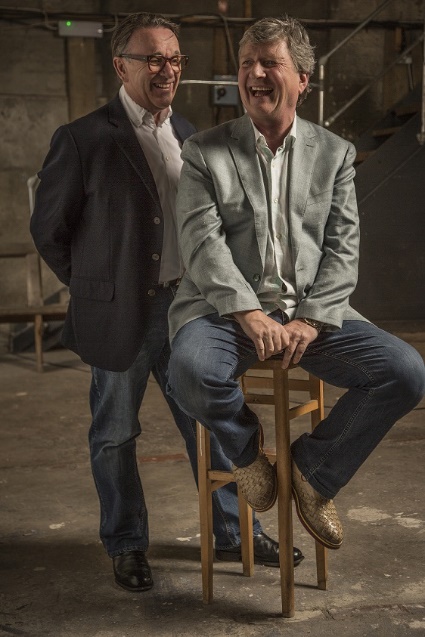
Difford and Tilbrook entertain audiences and themselves, apparently
The man-with-a-mic thing could have been cheesy, but, oddly enough wasn’t. Good questions, good responses. Squeeze had played “Black Coffee in Bed” earlier, but not Tilbrook’s electric guitar part. A fan asked Tilbrook if would do so and he obliged.
Another fan asked if they’d play “Is That Love?” and they did that, too.
They got a real nice slow-pitch softball from one fellow in the balcony: “Which album are you most proud of it and why?”
Tilbrook looked at Difford, smiled slightly and deferred. Difford took a beat before answering what he and every rocker must always answer no matter what when asked this: “We’ve got a new album.” He took another beat, feigning reconsideration. “Yeah, that one.”
The album is 2015’s Cradle to the Grave, their first full set of new songs in 17 years. [You can order it and other Squeeze albums here.] And, thing is, Difford may well be right – improbably enough given the trajectory of most rock ‘n’ rollers creativity. Let’s face it, most rock ‘n’ rollers tend to peak somewhere in their 20s or 30s and the band either breaks up or the members – some have quit, new ones added – straggle on playing the catalog and maybe pushing a new album to people largely indifferent to it.
Right now, it’s a best-of-both-worlds-scenario: Squeeze has confidence in the catalog and confidence in the new album. As Q magazine put it, “quintessential Squeeze.”
Could this portend another heyday? “No, I wouldn’t dare say it,” says Tilbrook, “but what I would say is the feeling now around us I haven’t experienced for a long while and that’s really great.”
Squeeze first broke up in ’82, re-formed in ’85, broke up in ’99, and reformed in ’07. They’d been on that play-the-hits-and-catalog track up until the songs from Cradle to the Grave landed.
“I think it happened quite early,” Tilbrook tells me when I ask about when the creativity started to sputter. “I don’t think we were as consistent, anything past 1982. And I think that process went right up to the last Squeeze album [1998’s Domino]. There was always good stuff, but it sort of somehow lost our sense of, you know, going for it properly.”
Pressure?
“The only pressure is to deliver and not take our eye off the ball,” says Tilbrook. “We’ve been firmly focused on this for what feels like about ten years now and I’m really proud of it. It’s ‘Let’s make it count every time and not get sloppy about it.” It worked out that we spent a lot of time, the first three months of the recording process wasn’t recording, and it was sitting in rooms. Funny enough, we weren’t in the same rooms; we were in adjacent rooms with a door open and we’d be working on our respective stuff and it worked out really great that way.”
As far as competing with their past, Tilbrook says, “That’s one of those things I really wouldn’t think about except you’re involving the name Squeeze so it comes with a certain set of expectations. I suggested to Chris that we do a record under a different name, but why would we do that? The only reason to do that would be to do something very different. And actually then you would find your way back to what the next version of Squeeze is going to be like. It wouldn’t make any sense.”
Tilbrook (born on August 31, 1957), and Difford (born on November 4, 1954), were childhood friends from Deptford, a southern part of London. They started playing together in the early ‘70s and, in 1978 we got to know them as Squeeze, with their John Cale-produced debut, with that synthy-squiggly semi-hit, “Take Me I’m Yours.” A couple more albums, Cool for Cats in 1979 and Argybargy in 1980 and they hit their pop-rock stride with songs like “Goodbye Girl,” “Up the Junction,” “Pulling Mussels (From the Shell),” “Another Nail for My Heart.”
Watch the official video for “Take Me I’m Yours”
They played all of these and 24 more, in Boston, four from the new album. Difford often played acoustic guitar and Tilbrook electric guitar or, occasionally, keyboards. There were some acoustic/electric instrument switcheroos and solo turns, too. Difford played three alone near the end of the first set, Tilbrook played two at the start of the second.

Chris Difford (Photo: Carlo Salib)
Back in the early ‘80s, many critics, this one included, hailed the Difford-Tilbrook songwriting duo as “the Lennon-McCartney of that generation.” In retrospect, though, what I hear more – current stuff and listening again to the catalog – is a Ray Davies connection: Clever, detailed, pithy and often very British observations woven into inventive, catchy melodies. Character-based stories told in short, economic spaces.
Tilbrook takes the nod to Davies as a compliment of the highest order: “I think other than Lennon and McCartney, Ray Davies was the most consistent writer from that time, far and away, more than Pete Townshend, more than Jagger-Richards. I think out of that particular class of people he had it all going as a writer and there are other things that made The Kinks less successful than they might have been.”
[Squeeze are on tour. Tickets are available here or here.]
Squeeze has two famous keyboard alumni – U.K. music show host Jools Holland and Paul Carrack (who used to sing “Tempted”) – and has had numerous players in all positions over the decades. Since 2007, it’s been with Stephen Large on keyboards and Simon Hanson on drums, and other players.
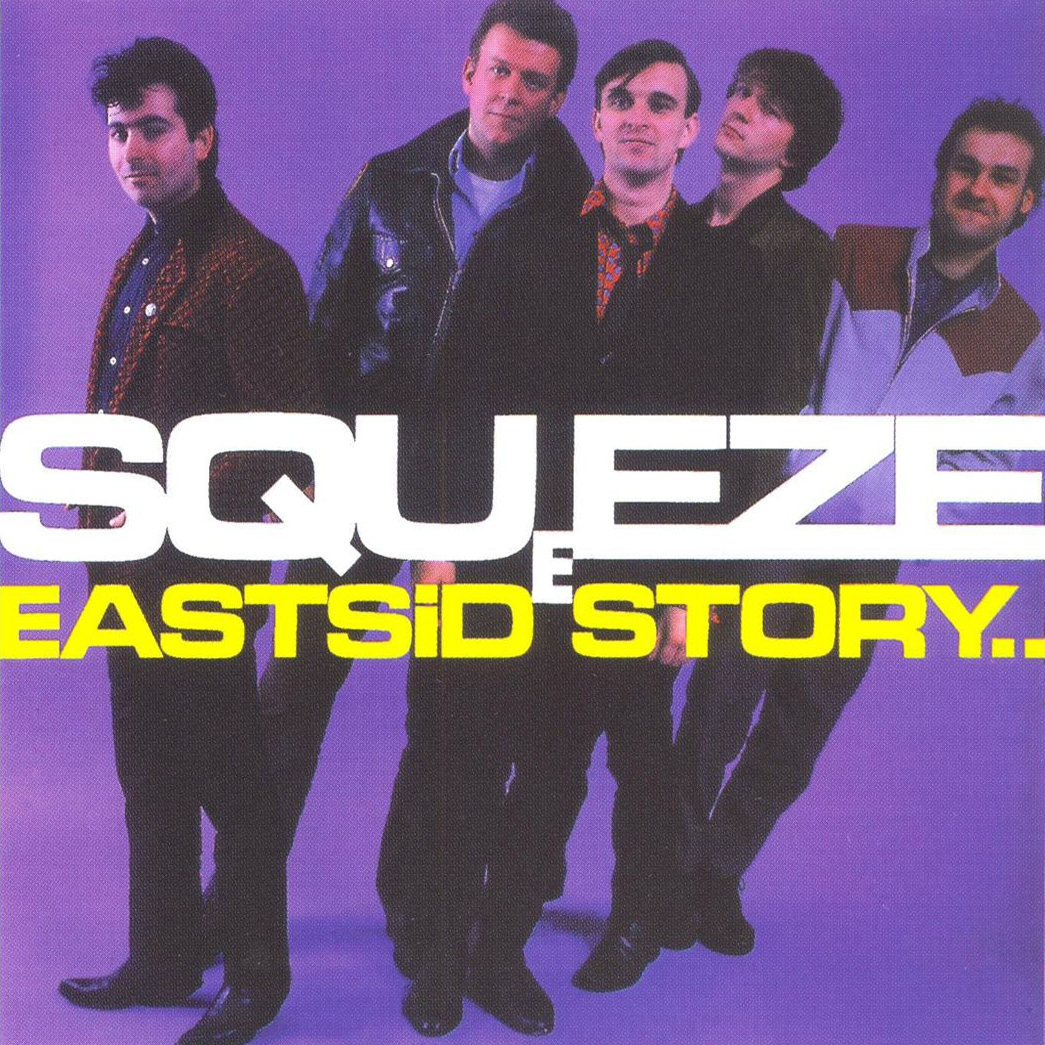
Generally, Squeeze’s modus operandi has been Difford: words/Tilbrook: music, with Tilbrook singing most of the lyrics, an octave above Difford. They sometimes harmonized, sometimes didn’t.
Related: Our Album Rewind of 1981’s East Side Story
“I think it’s fair to say that’s where we start,” says Tilbrook, of the songwriting, “but this time around we were both coming around toward the center so we both have more hands on everything and I think we’re stronger for it. I think, for me, since I did the Fluffers record [2009’s Pandemonium Ensues] everything I’ve done since then has been getting better and better.”
Difford recorded four solo albums during off-Squeeze hours from 2003-2011. Tilbrook recorded two solo albums under his own name and then one under Glenn Tilbrook and the Fluffers.
Tilbrook says the process that led to Cradle to the Grave actually began to gestate in 1998. “I hadn’t written lyrics since I was 15,” he says, “and I’d always been very happy with what Chris wrote – it was brilliant. But I learned how to write lyrics and my biggest influence was Chris Difford so that was a bit strange. But now I’ve got different strengths from Chris and we can combine those strengths.”
Difford and Tilbrook had a year, 1984, where they recorded and played out, well, as Difford & Tilbrook. This is how Tilbrook explains that period and why this tour is not that: “I love the McCartney quote about when they recorded ‘Sgt. Pepper,’ and they were calling themselves Sgt. Pepper saying they’d be free of the Beatles. In a way, Difford & Tilbrook was that same leap for us – going to try something a bit different. It was only partially successful in my view, but bits of it were really good. People will always see – and that’s part of what this show is about – no matter who else is in Squeeze, it will always be me and Chris. I think they think of us as a single entity. And Squeeze is very much a band. It’s had 35 members in it!”
Related: Squeeze in concert: Magnificent and tighter than ever
Squeeze has been playing gigs off and on since 2007. There was an album of re-recorded old tracks, Spot the Difference, in 2010. Difford told the Huffington Post why: “Squeeze has never owned our own copyrights because, obviously, they’re owned by a major record label. We thought it might be fun to re-record our songs to make it possible for us to own a little bit more of our own history. So, Glenn went in the studio, and did most of the work. I have to bow down to his achievements as a producer because he’s done a great job of making them sound pretty much like the originals.”
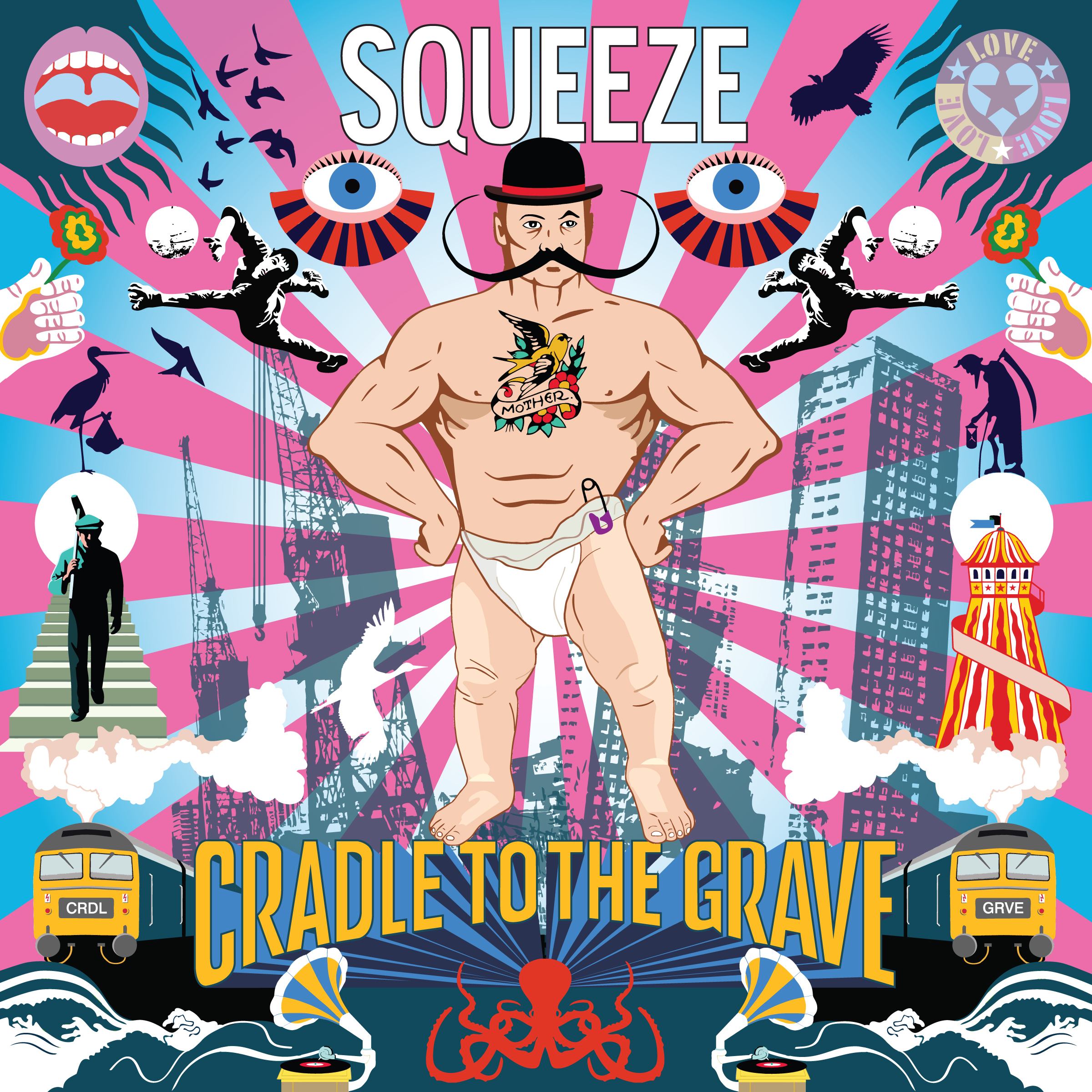 Cradle to the Grave was long in the making. “I think what happened is Chris and I worked our way back into it very slowly,” says Tilbrook of the latest reformation and incarnation. “First of all, being inspired by Brian Wilson and his band and how lovingly they treated Brian’s past. I thought I can go to shows and see that: Let’s do that with Squeeze. That was our entry point for getting back together, just to curate our past. That was enough for a while. But you can only do that for so long before you discover you realize it’s time to do something new. I didn’t see it coming for a long time. For us, it was about seeing what we could do together. That was the hardest part of the journey. Initially, our writing was a bit harder ‘til we got to a place where we thought we were good again. The record is something I’m very proud of and it can stand alongside the best of Squeeze before, as a contemporary thing.
Cradle to the Grave was long in the making. “I think what happened is Chris and I worked our way back into it very slowly,” says Tilbrook of the latest reformation and incarnation. “First of all, being inspired by Brian Wilson and his band and how lovingly they treated Brian’s past. I thought I can go to shows and see that: Let’s do that with Squeeze. That was our entry point for getting back together, just to curate our past. That was enough for a while. But you can only do that for so long before you discover you realize it’s time to do something new. I didn’t see it coming for a long time. For us, it was about seeing what we could do together. That was the hardest part of the journey. Initially, our writing was a bit harder ‘til we got to a place where we thought we were good again. The record is something I’m very proud of and it can stand alongside the best of Squeeze before, as a contemporary thing.
“Initially, I said to Chris, before we were doing a tour in 2011 or ‘12, I said ‘Let’s write a couple of songs and make them the centerpiece of the show.’ And that would just give us a different vibe. So we actually did ‘Cradle to the Grave,’ then the song that’s called ‘Sunny’ on the new record, which was then called ‘Tommy.’ We did those two songs in the set and saw that they went down really well. We can do that. So then we got involved with a friend of ours called Danny Baker; he’s a journalist/broadcaster in the UK. He wrote his autobiography [Going to Sea in a Sieve] and it was a mirror of mine and Chris’s life, as he was the same age as us and grew up in the same area. So I contacted him about doing a musical and he said ‘Actually, we’re doing a TV series [on BBC2 with Peter Kay], but let’s have you write [songs] for it.’ That was actually how the album got started; we had purpose for it. And we had funding for it as well, which was great.”
So, it began life as a soundtrack?
“That was the impetus,” Tilbrook says, “and they had first pick of the songs from the record. They used ‘Cradle to the Grave’ as the theme tune for the show. And some of the songs were written about certain situations within the script, but they more widely referred to our lives.”
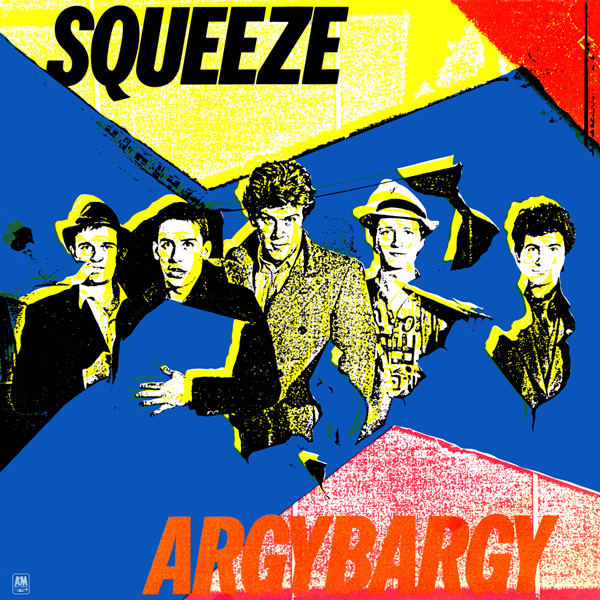 Tilbrook says it was beneficial to have both the structure and the liberty the opportunity presented. He laughs. “I think it’s unlikely that we’d have had a song like ‘Happy Days’ if not for us being pressed to write something insanely cheerful.”
Tilbrook says it was beneficial to have both the structure and the liberty the opportunity presented. He laughs. “I think it’s unlikely that we’d have had a song like ‘Happy Days’ if not for us being pressed to write something insanely cheerful.”
For my money, Squeeze’s best song ever remains “Up the Junction.” It’s that rarity of rarities – a pop song with no chorus, just 3:10 unspooling of telling verses and constant hooks. It tells the story, from the fella’s point of view, of a relationship from the spark of first meeting (“I never thought it would happen/With the girl from Clapham”), engagement, a job, ordinary pleasures, the birth of a daughter and then, skipping ahead, her mother has gone off with a soldier. Our hero? He’s left with his drinking, reasoning “I’d beg for some forgiveness/But begging’s not my business/And she won’t write a letter/Although I always tell her/So it’s my assumption/I’m really up the junction.” Difford has said he borrowed the “not use the title until the end” trick from Roxy Music and “Virginia Plain.”
Watch Tilbrook and Difford perform “Up the Junction” at the 2017 Glastonbury Festival
On the new disc, “Nirvana” is a story of a marriage floundering after the children have grown up and left home (“The house was a ship without a sail”). Life has become tedious. “Each day like the one before/The dreams evaporated/As the weeks and months turned into years.” The couple stay together, bitterly, resigned. A more grown-up companion to “Up the Junction” maybe? Was it, perhaps, written with that in mind?
“No,” says Tilbrook, “but now that you’ve said it, Yes! Very much so! Thank you.”
- Interview: Ringo Starr’s Drum Beat Can’t Be Beat - 07/06/2025
- 10 Songs That Defined New Wave Music - 07/01/2025
- Mark Farner Interview: Grand Funk Railroad’s Legacy - 06/05/2025



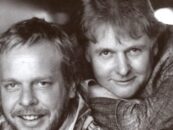

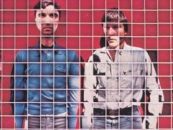
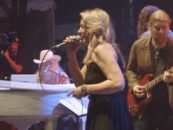

2 Comments so far
Jump into a conversation“Up the Junction” has always been my fave as well. Remarkable little number. Got me through my first real heart ache.
great article from an avid Kinks/Squeeze/Roxy Music fan….how on earth is Squeeze, Roxy, Buzzcocks, The Jam, and other iconic British rock groups not in the RRHOF???